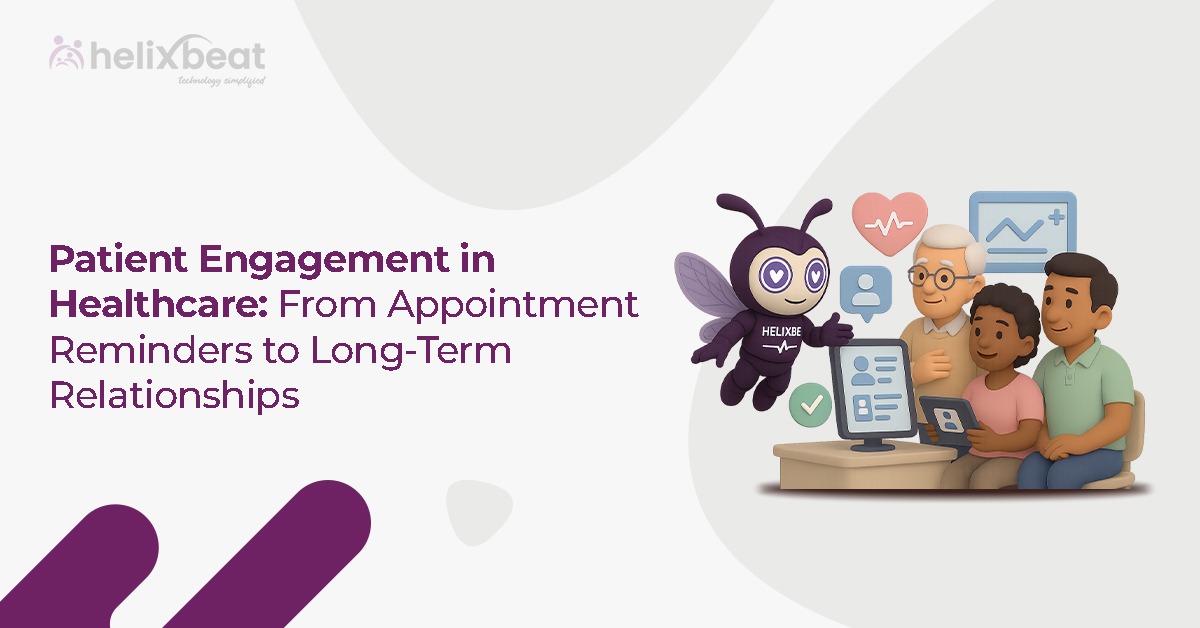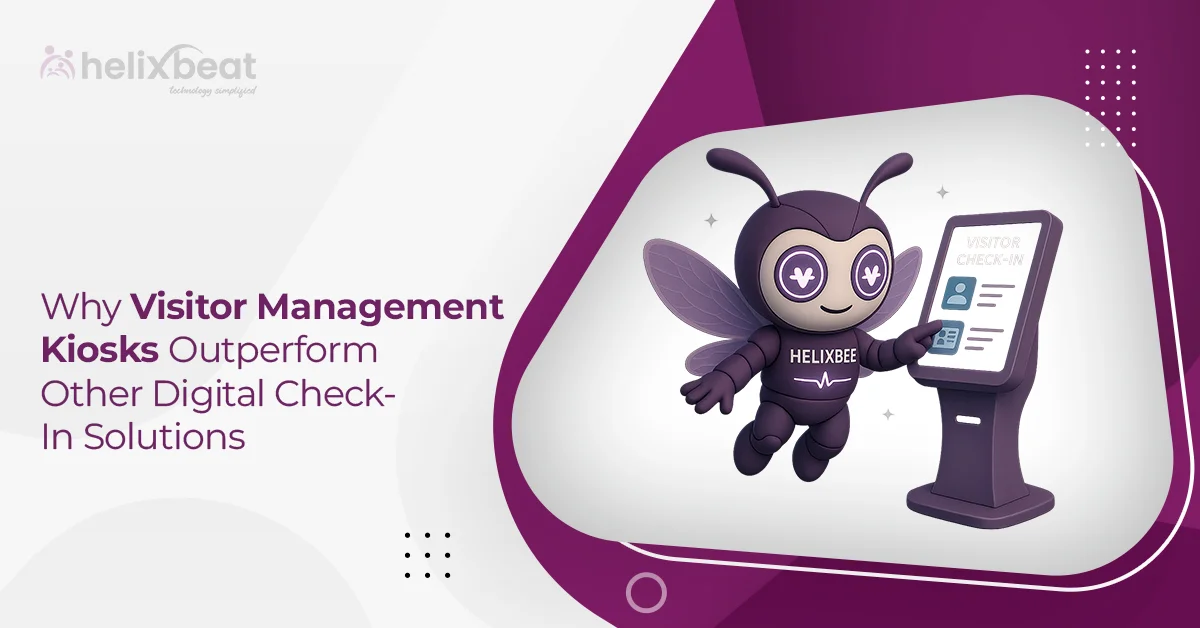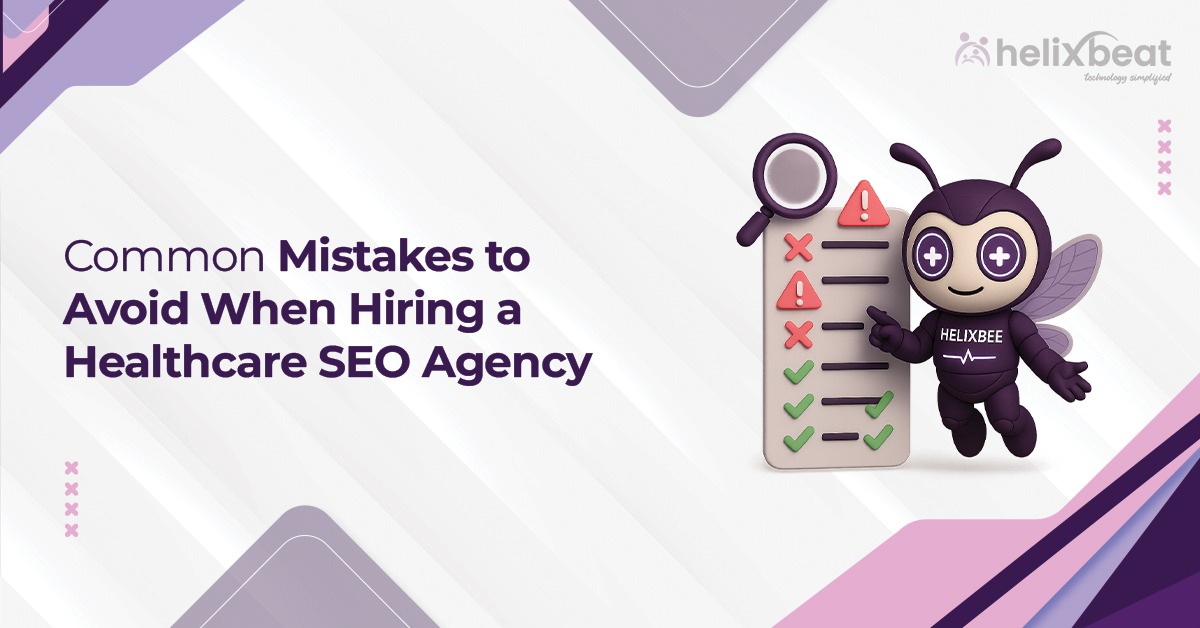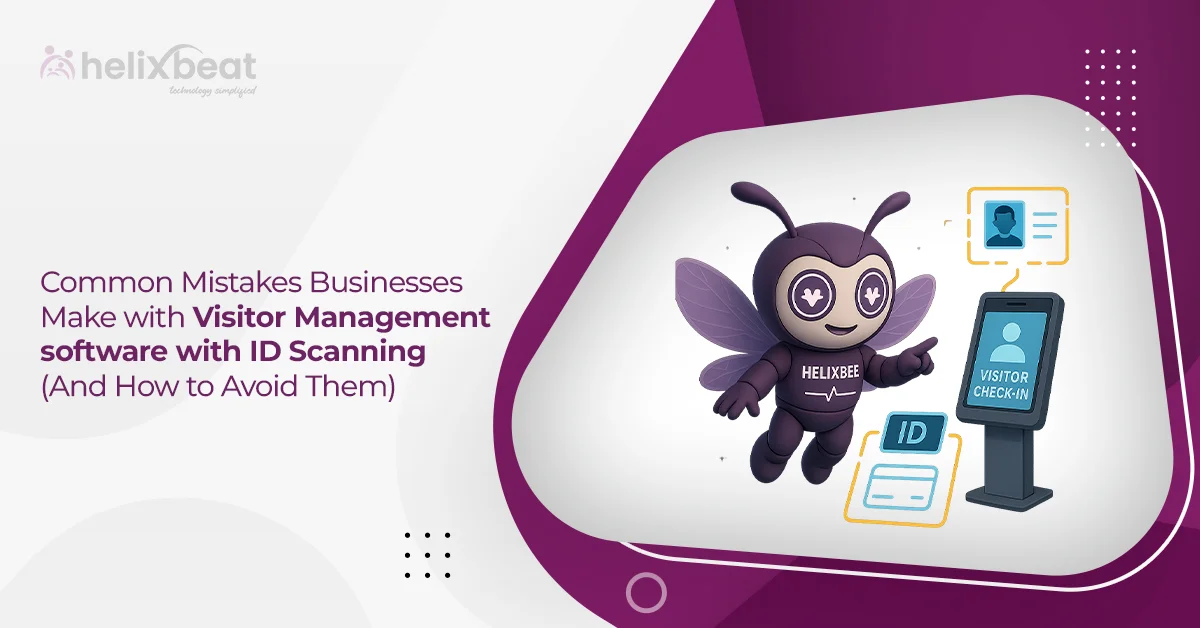When it comes to patient engagement in healthcare, it’s not just about appointment reminders or follow-up messages. Authentic engagement involves creating meaningful, ongoing relationships between healthcare providers and their patients. Patient engagement in healthcare is the process of ensuring that patients are actively involved in their care. This includes everything from understanding their diagnosis to managing their treatment plans and making informed decisions about their health.
According to a 2023 report by the (NIHCM) National Institute for Health Care Management, patients who actively engage with their healthcare providers are more likely to adhere to treatment plans, resulting in better health outcomes.
At the heart of this engagement lies patient data solutions, which are integral to tracking, monitoring, and improving the patient experience.
Get a Free Demo of PULSE for Patient Engagement
Table of Contents
Why Patient Engagement is Crucial for Long-Term Relationships
Patient engagement is the foundation of building strong, long-lasting relationships between healthcare providers and patients. It goes beyond basic communication—it involves actively involving patients in their care journey, empowering them to make informed decisions, and fostering trust through transparent and consistent interactions. Here’s why patient engagement is essential for sustained patient-provider relationships:

1. Improved Health Outcomes
- Engaged patients are significantly more likely to follow their treatment plans, make necessary lifestyle changes, and manage chronic conditions effectively.
- Research shows that engaged patients exhibit higher adherence to prescribed medications, attend regular follow-up appointments, and are more proactive in managing their health.
- This leads to better health outcomes, reduced complications, and a decrease in hospital readmissions, especially for patients with chronic conditions such as diabetes, hypertension, and heart disease.
- By staying engaged, patients take ownership of their health, leading to long-term improvements in their quality of life.
2. Increased Patient Satisfaction
- Patients who feel involved in their care are more likely to feel valued and respected by their healthcare providers.
- Patient engagement enhances the overall experience, making patients feel like partners in their healthcare journey rather than passive recipients of care.
- When patients are encouraged to ask questions, voice their concerns, and participate in decision-making, they are more likely to be satisfied with their care and develop trust in their providers.
- High levels of patient satisfaction contribute to improved patient retention, loyalty, and positive word-of-mouth referrals.
3. Better Communication
- Ongoing patient engagement fosters better communication between healthcare providers and patients.
- Transparent communication allows patients to express their concerns, preferences, and expectations, which helps providers tailor their care plans accordingly.
- Moreover, patients are more likely to share relevant health information, leading to more accurate diagnoses and personalized care.
- Clear communication is the key to understanding the needs of each patient and offering the best possible care.
- By integrating patient data management systems like PULSE by HelixBeat, healthcare providers can easily gather and utilize data to personalize care.
- PULSE enables healthcare teams to track health metrics in real-time, monitor patient progress, and ensure patients are engaged and actively involved in their care.
- This data-driven approach strengthens the patient-provider relationship, ensuring patients feel heard, supported, and well-cared-for.
How HelixBeat Elevates Patient Engagement?
HelixBeat’s PULSE offers patient engagement solutions that focus on creating seamless interactions between patients and providers. By using patient data management software like PULSE, healthcare providers can offer an interactive experience that encourages continuous patient involvement.
Here’s how PULSE elevates patient engagement in healthcare:
- Real-Time Data Integration
- PULSE integrates patient data from various sources, giving providers a comprehensive view of patient health, enabling personalized care.
- Automated Communication
- With automated reminders for appointments, medications, and health tips, PULSE ensures patients remain engaged and informed.
- Patient-Controlled Access
- PULSE enables patients to access their health records, schedule appointments, and communicate directly with their healthcare providers, empowering them to take charge of their health.
See How PULSE Can Improve Your Patient Engagement Strategy
Tips for Implementing a Strong Patient Engagement Strategy
Creating a robust patient engagement strategy is essential for improving patient outcomes, fostering loyalty, and ensuring long-term success in healthcare practices. An engaged patient is more likely to follow treatment plans, attend follow-up appointments, and be proactive in managing their health. Here are some actionable tips to implement an effective patient engagement strategy, especially when leveraging advanced patient data management systems like PULSE by HelixBeat.
1. Leverage Technology: Centralize Patient Information and Communication
- Use patient data management systems like PULSE to centralize patient information, track health metrics, and communicate effectively.
- PULSE integrates patient data across various touchpoints, ensuring that healthcare providers have a complete view of the patient’s health history.
- This centralized information helps personalize interactions and creates a more efficient way to stay connected with patients.
- By using technology to automate appointment reminders, send follow-up messages, and update patients about their health progress, healthcare providers can reduce administrative burdens and focus on delivering better care.
Request a Demo of PULSE for Implementing Patient Engagement
2. Personalize Patient Care: Tailor Communication and Treatment Plans
- Every patient is unique, and so are their healthcare needs.
- To improve patient engagement, it’s essential to personalize care.
- Use insights from patient data management systems like PULSE to create customized treatment plans that cater to the individual needs of each patient.
- By tailoring communication, healthcare providers can engage patients more effectively.
- For example:
- Personalized Appointment Reminders: Customize reminders based on treatment schedules and patient preferences.
- Custom Health Tips: Provide specific guidance that aligns with each patient’s medical conditions and goals.
- Personalized care not only boosts patient satisfaction but also encourages patients to stay engaged in their health journey.
3. Provide Educational Resources: Empower Patients with Knowledge
- Patient education is a crucial aspect of engagement.
- When patients understand their conditions and treatment options, they are more likely to take an active role in their care.
- PULSE enables healthcare providers to easily share educational resources, such as articles, videos, and self-management tools, directly with patients.
- Offering information on how to manage chronic conditions, medication adherence, and lifestyle changes can empower patients to make informed decisions about their health.
- Additionally, video consultations through PULSE can be used to explain complex medical conditions in a more transparent and more accessible way, fostering a deeper connection between the patient and healthcare provider.
4. Encourage Two-Way Communication: Foster Open Dialogue
- A strong patient engagement strategy thrives on two-way communication.
- Creating clear communication channels where patients can easily reach out to questions, concerns, and feedback ensures that they feel heard and valued.
- Use platforms like PULSE to facilitate secure messaging between healthcare providers and patients.
- Additionally, ensure that patients have access to their health data through the system, allowing them to track progress, ask for guidance, and make informed decisions.
- Engaged patients are more likely to adhere to their treatment plans when they feel involved and supported by their healthcare provider.
5. Reward Engagement: Incentivize Healthy Behaviors and Regular Check-Ins
- Incentivizing patients can further enhance patient engagement to stay on track with their health goals.
- Offering rewards, discounts, or recognition for healthy behaviors and regular check-ins encourages patients to remain active participants in their care.
- For instance, patients who consistently attend appointments, follow prescribed treatments, or engage in health improvement activities could be rewarded with discounts on services, access to exclusive health resources, or even public recognition for their progress.
- By using PULSE to track patient behaviors and milestones, healthcare providers can implement a rewards program that is tailored to each patient’s engagement level.
- This creates a positive reinforcement loop that boosts both engagement and health outcomes.
Measuring the Impact of Patient Engagement
The success of any patient engagement healthcare strategy depends on continuous evaluation. Here’s how to measure the impact of patient engagement:
- Patient Satisfaction Surveys: Collect feedback to gauge patient engagement and satisfaction with the care they receive.
- Health Outcomes: Track key health metrics, such as blood pressure, blood sugar levels, and medication adherence, to assess the impact of engagement on outcomes.
- Retention Rates: Analyze patient retention and loyalty over time, as engaged patients are more likely to return and follow through with treatment plans.
- Operational Efficiency: Monitor appointment no-show rates, patient communication effectiveness, and reduce administrative burden.
- With PULSE, healthcare providers can easily track and measure these metrics in real-time, ensuring that their patient engagement strategy is working effectively.
10 Best Strategies to Improve Patient Engagement
Improving patient engagement is essential for achieving better healthcare outcomes, increasing patient satisfaction, and fostering long-term relationships. Here are 10 proven strategies that healthcare providers can implement to improve patient engagement:
1. Utilize Remote Monitoring
- Empower your patients with remote patient monitoring tools that allow them to track their health metrics in real-time.
- By providing patients with devices to monitor vital signs like blood pressure, glucose levels, and heart rate, you encourage them to take an active role in managing their health.
- Remote monitoring enhances patient engagement by enabling continuous care and timely interventions, reducing the need for frequent hospital visits.
- With PULSE by HelixBeat, healthcare providers can track patient data securely and in real-time, offering actionable insights to both patients and providers.
2. Offer Virtual Consultations
- Telehealth services have become a vital part of healthcare, especially with the rise of remote care and increased demand for convenient access.
- Offering virtual consultations provides patients with flexible options to consult healthcare providers from the comfort of their homes, making it easier to stay connected and engaged with their care plans.
- By integrating telehealth features within PULSE, healthcare providers can offer seamless video consultations, increasing patient satisfaction and engagement, especially for non-urgent care needs.
3. Personalize Communication
- Patients are more likely to stay engaged when they feel the care they receive is tailored to their needs.
- Sending personalized messages, appointment reminders, and health tips ensures that patients feel valued and informed.
- Personalization also includes providing educational content relevant to their specific health conditions, helping them make informed decisions about their care.
4. Create Online Portals
- Developing secure online portals for patients is one of the best ways to facilitate engagement.
- These portals should provide access to patient health records, appointment scheduling, medication reminders, and direct communication with healthcare providers.
- Online portals offer a central location for patients to manage their healthcare and stay connected with their providers, promoting continuous engagement.
- PULSE offers an integrated patient portal where patients can securely access their medical information, making it easy for them to stay informed and engaged in their treatment plans.
5. Integrate Mobile Apps
- A patient management app can help patients track their appointments, medications, and health goals, empowering them to take an active role in managing their health.
- PULSE includes an intuitive mobile app that gives patients the tools they need to manage their health easily, from appointment reminders to health metrics tracking, ensuring they remain engaged with their care.
6. Encourage Self-Management
- Encouraging patients to actively manage their chronic conditions through self-management tools can significantly improve patient outcomes.
- Provide patients with the resources and support they need, such as condition-specific trackers, educational materials, and self-care tips.
- This approach empowers patients to take ownership of their health, reducing the risk of complications and improving adherence to care plans.
- PULSE helps healthcare providers deliver these tools in a seamless, user-friendly manner, ensuring that patients have easy access to everything they need for effective self-management.
7. Foster Patient-Provider Relationships
- Building strong relationships with patients is essential for maintaining engagement over time.
- Establish trust by ensuring that communication is open, transparent, and compassionate.
- When patients feel that their providers genuinely care about their well-being, they are more likely to stay engaged and adhere to treatment plans.
8. Utilize Data Analytics
- Data is key to understanding patient behavior and engagement levels.
- By utilizing data analytics, healthcare providers can track patient interactions, appointment histories, and health metrics, providing insights that help improve care strategies.
- With this information, providers can identify trends, predict potential health issues, and tailor their engagement efforts accordingly.
9. Offer Incentives
- Incentivizing patient engagement is a great way to encourage patients to participate actively in their care.
- Offering rewards for activities like attending appointments, following treatment plans, or making healthy lifestyle changes can motivate patients to stay on track.
- These incentives can include discounts on services, gift cards, or even recognition for achieving health milestones.
- PULSE helps healthcare providers implement incentive programs through its secure patient management system, ensuring that rewards are tracked and managed efficiently.
10. Improve Access to Care
- One of the most effective ways to increase patient engagement is by making healthcare more accessible.
- Offering flexible scheduling options, telehealth services, and convenient communication channels ensures that patients can receive care whenever they need it.
- This reduces barriers to care and promotes continuous patient engagement.
- PULSE enhances accessibility by providing 24/7 access to patient records, virtual consultations, and appointment scheduling, making it easier for patients to engage with their healthcare providers on their terms.
Discover How PULSE Enhances Accessibility for Patients
Why Choose PULSE by HelixBeat for Patient Engagement?
PULSE by HelixBeat is a comprehensive patient engagement healthcare solution designed to streamline operations and enhance patient interactions. With its seamless integration of patient data solutions, remote monitoring, patient communication tools, and self-management features, PULSE provides healthcare providers with the tools they need to improve patient engagement from appointment scheduling to long-term care.
- Real-Time Data Integration: Integrates patient data into one unified platform, ensuring healthcare teams have access to the most up-to-date information.
- Patient-Centered Care: Empowers patients to take control of their healthcare through personalized communication and self-management tools.
- Comprehensive Analytics: Offers actionable insights into patient engagement, behavior, and health outcomes.
Request a Free Demo of PULSE for Patient Engagement
What’s Next?
Patient engagement is a key driver of better healthcare outcomes and long-term relationships. By implementing the patient engagement strategies outlined above and integrating solutions like PULSE by HelixBeat, healthcare providers can improve the patient experience, enhance care coordination, and ultimately achieve better health outcomes.
Start Improving Patient Engagement with PULSE Today
FAQs
- What is Patient Engagement?
Patient engagement refers to the process of involving patients in their healthcare, improving communication, and encouraging them to take an active role in managing their health.
- Why is Patient Engagement Crucial for Long-Term Relationships?
Patient engagement fosters trust, improves patient outcomes, and increases satisfaction, all of which contribute to stronger, long-term patient-provider relationships.
- How Can PULSE Improve Patient Engagement?
PULSE offers real-time patient data, automated communication, and self-management tools, making it easier for patients to engage with their healthcare providers.
- What Are Patient Data Solutions?
Patient data solutions are systems designed to securely collect, store, and analyze patient data to improve care coordination, patient engagement, and outcomes.
- What Is a Healthcare Data Management System?
A healthcare data management system is a software platform that helps healthcare providers organize, access, and analyze patient data efficiently to improve patient care.
- How Does CRM Help with Patient Engagement?
CRM systems help healthcare providers track patient interactions, send personalized messages, and improve patient communication, leading to better engagement.
- What Is the Role of Patient Software Management in Patient Engagement?
Patient software management ensures that patient data is secure, accessible, and actionable, improving care delivery and patient engagement.
- How Can Telehealth Improve Patient Engagement?
Telehealth enables patients to consult with healthcare providers remotely, increasing access to care and enhancing patient engagement, especially for those with chronic conditions.
- What Is a Patient Management App?
A patient management app is a mobile application that helps patients track their health, book appointments, and communicate with their healthcare providers.
- How Can Data Analytics Improve Patient Engagement?
Data analytics helps healthcare providers understand patient behavior, track engagement levels, and tailor their care strategies to meet individual patient needs.
- What Are the Benefits of Patient Engagement Software?
Patient engagement software helps healthcare providers automate communication, monitor patient progress, and improve overall patient care and satisfaction.
- How Does PULSE Help with Healthcare Data Management?
PULSE integrates patient data from multiple sources, providing healthcare providers with a centralized platform for managing patient information and improving engagement.














